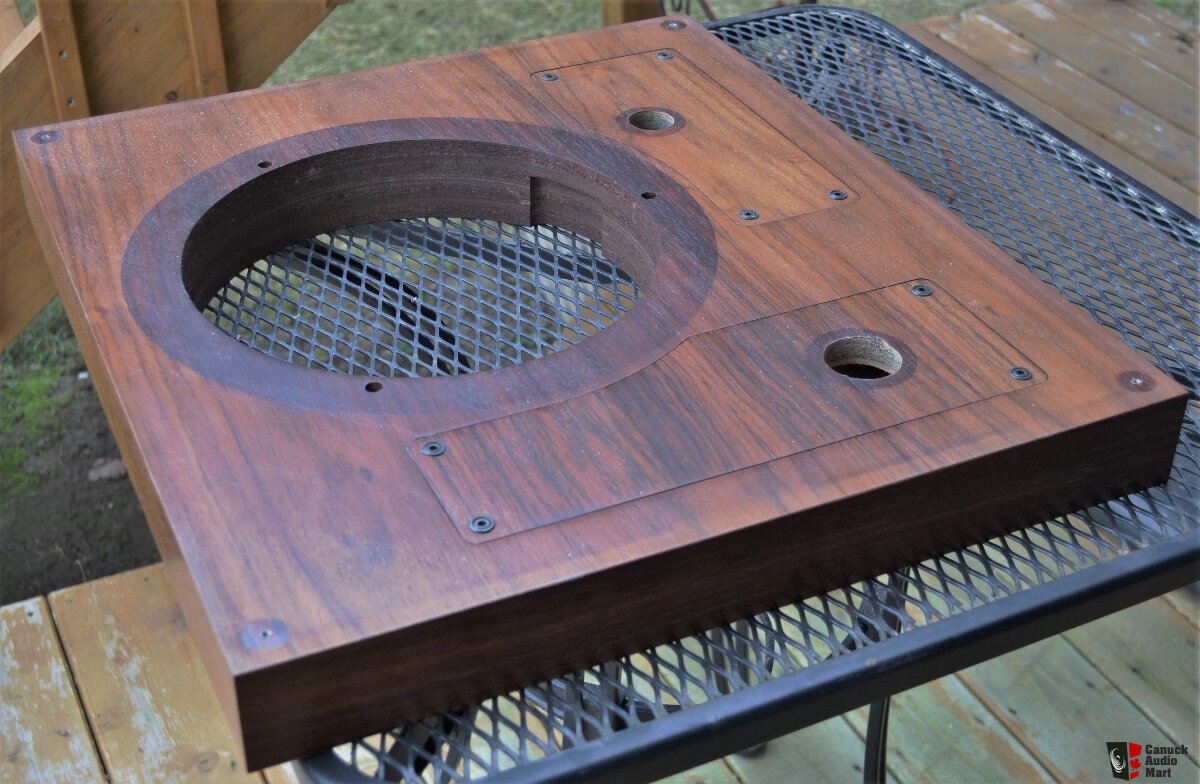Showing 6 responses by elliottbnewcombjr
I am a big fan of multiple tonearms, and chose the JVC TT81 in a 2 arm JVC CL-P2 plinth, (my research leading me to avoid the TT101 and 801 as too prone to needing service, and too few sources for service). Those large plinths have dust covers, a must for me. I use a small inexpensive totally quiet 120/100 transformer, no need to avoid a 100v model IMO. http://www.thevintageknob.org/jvc-TT-101.html Single arm, many options exist: "Many integrated players which used the same drives and/or Double Bi-Directional Servo technology were available as well like, among others : QL-10, QL-7 or QL-F6, all based on the TT-101, TT-81 or TT-71 drives." I just bought a vintage UA-7082 11-1/8" tonearm for mine, it is a wonderfully precise device. Mine had renewed suspension of the rear counterweight section, learn about that, I am very glad I took a chance on it. /////////////////////////////////////// The Micro Seiki is a clever design, such a different look, and the dust cover will need to be even larger/taller/heavier. I really like their 505 arms. ////////////////////////////////////////////////////////// Technics: I would add the Vintage SP-15 and SP-25 QLDD TT’s to the Technics list, the 15 is 3 speeds, and they let you use the EPA-B500 Tonearm Base, a wonderful way to have alternate arm wands and cartridges in a compact package, excellent arm height adjustment, one example check the specs, they compare to the very latest/best achieved https://vintagetechnics.audio/turntables.php scroll down to the bottom of the list for the SP-15 and SP-25
|
Actually, it just so happens I have some experience with all 3 brands Micro-Seiki I briefly played with a Micro-Seiki 1000 that was at VAS for customer pickup, picked it up, tapped it here and there, it seems quite solid, impressive, but that’s it, didn’t hear it, but if I liked the look, I would expect it to perform well, I find the arm mount clever and it seemed totally solid. No plinth means the dust cover will need to be very tall and carefully placed, no locating bimps to assist when lowering like my JVC Plinth has. Technics SP-15 (not 10) I gave my friend a Technics SP-15 that I bought from Harvey’s used shelf way back when. It had a Grace arm. During covid, we both upgraded our systems, he took my suggestion and bought an EPA-B500 tonearm base, with an S arm wand with removable headshell. I installed it, and he bought a SUT and was finally able to use his Goldring Eroica LX MC cartridge which he previously only heard here. I just re-calibrated everything a week ago, changed the cartridge to a Grace MM we both like more than the Goldring. He did have to replace his SP-15’s power switch, happily Kevin at KAB lives in walking distance from my house, easy fix. JVC, now years of trouble free experience with my TT81 I just modified the base of the long tonearm, re-installed it yesterday, all good, tomorrow I will switch it for the JVC UA-7082 arm which I took apart (after buying the 1/16" allen wrench that I needed). I’ll take some photos and measurements, re-assemble, install it in place of the long black arm. I installed/played it briefly prior to taking it apart, it’s totally impressive, I wish the headshell fitting had azimuth adjustment like the Micro Seiki 505 arms do. The two headshells that came with my Vintage AT160ml cartridges allow azimuth adjustment like this one
These headshells have only two allowable positions for the cartridge. Rather than slots, they have two sets of tapped threads ready to receive the dedicated screws whose lengths fit the cartridge flange, a clean look, nothing visible from above: but not enough variability when using non-oem tonearms to get specific overhang and angle a speck if needed for null points alignment. I just realized I can have my friend convert them to slots for me. |
I love the Acos Lustre GST-801, it is my favorite arm, I wish they made a long version. It is the only one I change both arm height and anti-skate while playing, it is that smooth. The headshell fitting allows a bit of twist when loose to adjust azimuth and firms up when tightened, even though I would prefer Micro Seiki's adjustable fitting. I use the mirror method for azimuth, a mini-level on the headshell, an acrylic block with grid .... a mixture of techniques, and the blank side lp method to see skate and the effects while adjusting anti-skate force. The UA-7082 top anti-skate dial is so smooth and precise, my new favorite adjuster, I changed it while playing, but the arm height needs two hands, thus tool-free but not while playing. |
It’s about far more than ringing, I think the heavy and solid cast iron platter of my Thorens TD124 was one reason it produced the best bass I ever had, not just inertia for speed stability which is important in belt or idler wheel drive, but solid, 10lbs of cast iron, my instincts say better than 10lbs of acrylic .... perhaps better than 20lbs of arylic, I never had/heard that, just instincts I wish my JVC TT81 had 10lbs of cast iron, or something as solid but non-magnetic. the sandwich pair of 1/4" thick iron plates in it’s plinth are part of what I like about the Luxman PD-444 design I helped my friend acquire and set up. |
lewm My JVC Victor CL-P2 Plinth’s arm boards are special 5 layer composite, the plinth a similar 7 layer composite construction. Every time I handle them, I am impresssed by them, is this what you replaced?
This composite construction feels so solid, it is one of the reasons I am so critical of Linn’s Bedrok hollow skirt type base, which I would never call a plinth.
|




